Most people are familiar with medium as an additive (made exclusively of binder with zero pigment) to mix into paint. In this application, it is used to lower opacity without significantly altering viscosity. This use is similar to watering down the paint, except it doesn’t have a tendency to pool, run, or streak like watered-down paint might if you’re working on a non-absorbent surface like we discussed in Part 1 – Working Time. This is not how I use it.
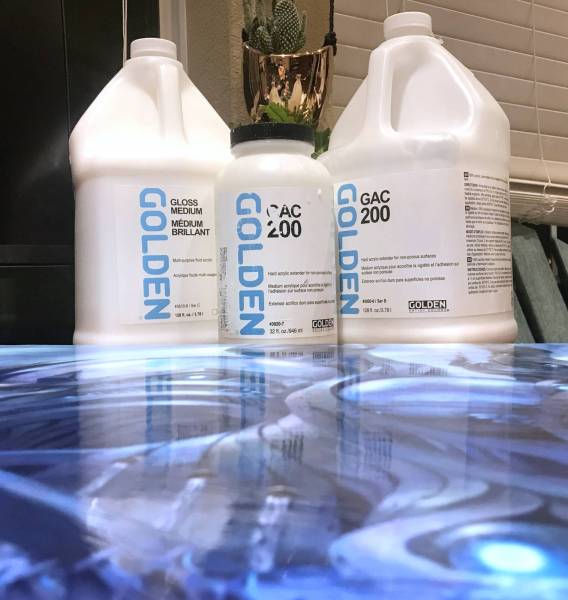
The krabby-patty secret ingredient
I am frequently asked “Why doesn’t it look like [what I expect from] acrylics?” The answer is that I use A LOT of medium, but not as an additive. I brush it on, without mixing with paint, to achieve the following:
- Fix color shift
- Contribute to a luminous effect
- Save my work before trying something risky, experimental, etc
- Even out the surface texture
- Reduce absorbency to increase working time
Fixing Acrylic Color Shift
Contrary to what I’ve heard from others, the only color-shift with undiluted professional-grade acrylics I’ve ever observed is with darker colors becoming lighter as they dry. The paint goes down wet and glossy and becomes matte as it dries, appearing lighter. It can make painting on top of it (and matching that color) very difficult!
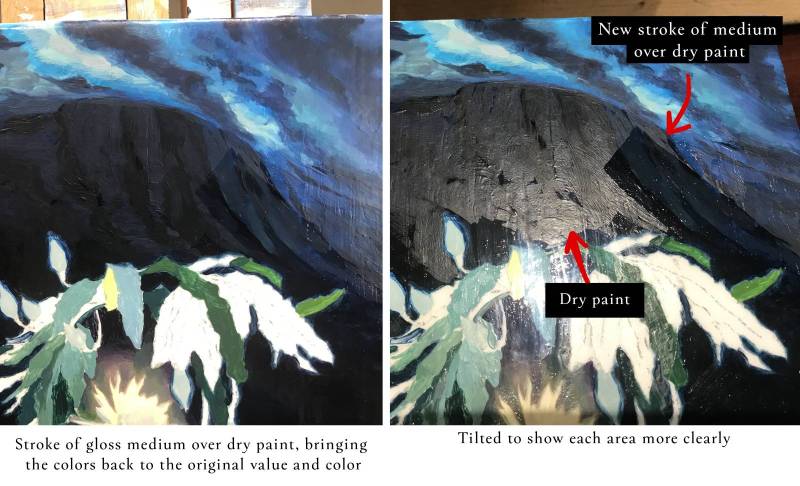
A layer of medium will return the dry paint on the surface back to its original color, allowing wet paint to match when applied. It is quite similar to ‘oiling out’ with oils, where oil or medium is brushed or rubbed on the surface to achieve the same ends. Unlike oils, adding the medium does not have the potential to contribute to yellowing, and if anything, strengthens the physical integrity of the painting. Just like oils though, thick layers of paint will sometimes appear to drink in the medium and need a second coat.
Luminosity
Luminosity in a painting is created by layers of thin, transparent pigments glazed over a white or metallic ground. The light passing through the color, bouncing off the gesso, and bouncing back out create much more vivid color than an opaque color can. This trait is often associated with oils and mistaken as exclusive to oil paintings. If acrylics are applied in the same way, they have the same effect.

Occasional layers of medium between glazes of transparent pigments serves to aid in this effect by giving more room for light to bounce around. To maximize this effect, I’ve chosen a palette with as transparent of pigments as possible…ultramarine and manganese but not cobalt for blues, for example.
CTRL-S
This one is fun, and as far as I know, not replicable in other mediums.
It is not uncommon for artists to use sandpaper on their paintings to remove dry paint, but it is a blunt tool. More deftly, some watercolorists use melamine foam (magic eraser) to return to the white of the paper underneath, utilizing masking tape and stencils to gain more control of where exactly to remove paint from. Melamine removes acrylics too…but not medium!
There are many ways this can be utilized, but by far the most important one for me is that medium effectively ‘saves’ my work, like a ctrl-s followed by ‘add new layer’. Anything I do on the new layer can be completely flawlessly erased, no matter how long it has been dry, without affecting the work done on the saved layer. If I like how something worked out, I can hit it with some medium and effectively ‘merge down.’
What if I wanted to try adding some lower cumulus clouds, but wasn’t sure if I’d like the change? I don’t have to worry about losing the work I’d be covering up…I’ve painted medium over the stratus clouds that I’ve already completed. Once I’ve finished the new puffy cloud, it sits for a week while I work on a client project.
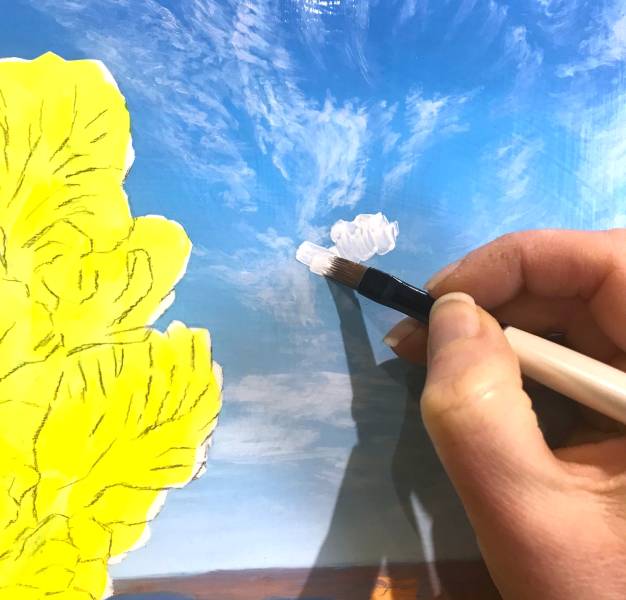
The next week, I decide I liked it better without the cloud.
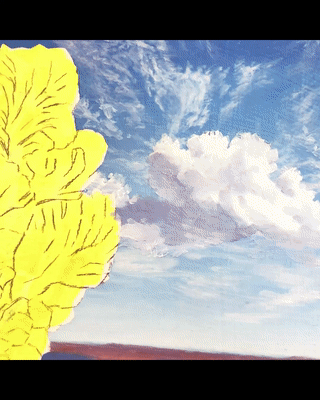
On Thran Portal, I put down a layer of medium before finishing the painting with the magic effect. The flare extends over most of the image, and there was a high chance that my first attempt would not be evenly applied, might be slightly askew, or just not look right and may need a second go of it.
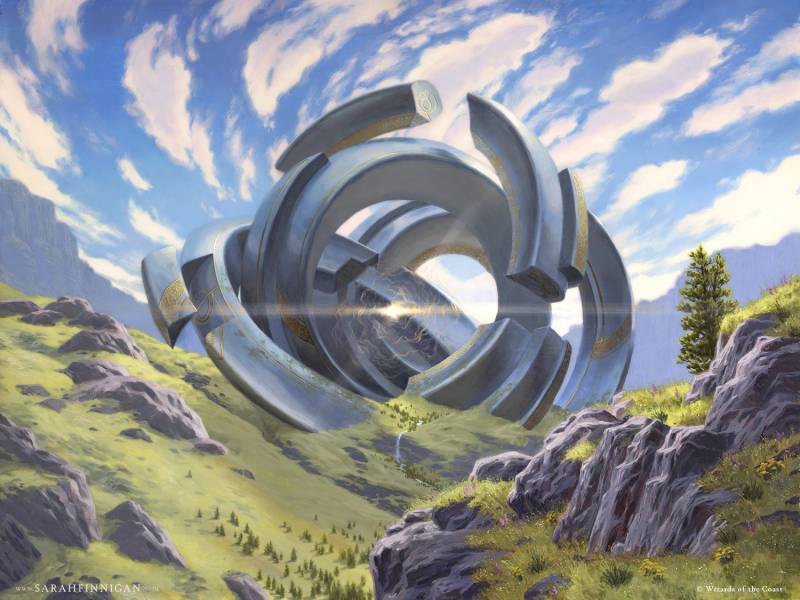
Thran Portal for Magic: The Gathering
Any time I am flicking stars off a brush with my thumb, I’m able to do it at the end. I don’t have to rush, because stars that landed inappropriately can be easily removed, even if I miss one and notice it a few days later.
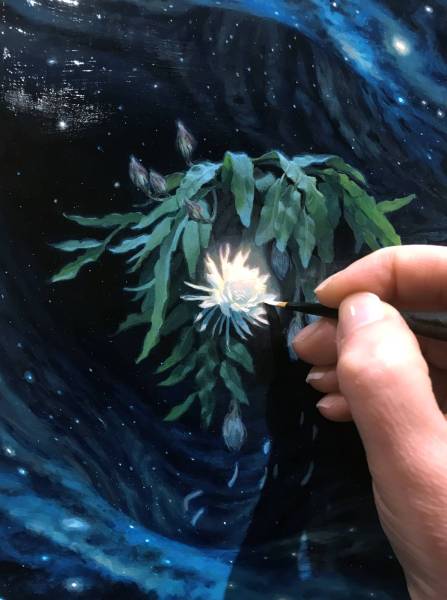
‘For a Moment’
It is important when painting a landscape to maintain a sense of scale. When I feel like I’m losing that sense, I’ll paint stick figures throughout the image, or draw on perspective lines like one might do on a separate layer in a digital file.
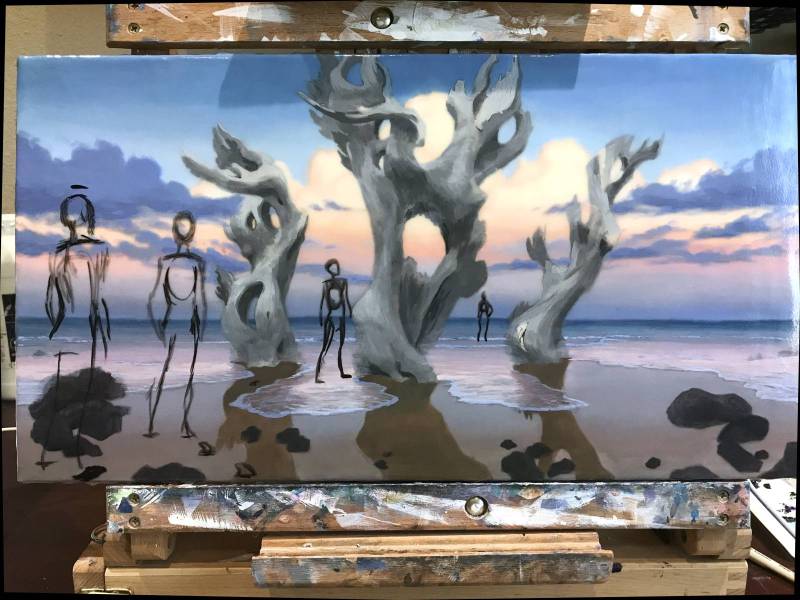
Tools & Methods
I use a 50/50 mix of gloss medium and GAC 200. GAC 200 is like gloss medium but dries into a harder film that is more difficult to indent. I do not recommend using matte medium for these purposes because it has matting solids that decrease clarity.
There are two ways I apply medium, which vary based on what I’m trying to achieve: a thicker poured application that covers the whole surface, or a thin, brushed-on spot application that allows me to continue working while it dries.
If I want to reduce texture and reduce absorbency in preparation for a glaze, or if I’m wanting to do a very solid save on my work, I lay the painting down and apply medium thickly. I usually will do this at the end of the working day so that it dries during dinner or overnight. I put the painting flat on an elevated surface with the edges hanging over. After sweeping off dust, I pour medium onto it and brush it lightly with a large soft brush to cover the whole painting. The extra medium drips over the side, and gravity allows the surface to level. I use a creme-brulee torch to remove bubbles…and to occasionally make creme brulee!
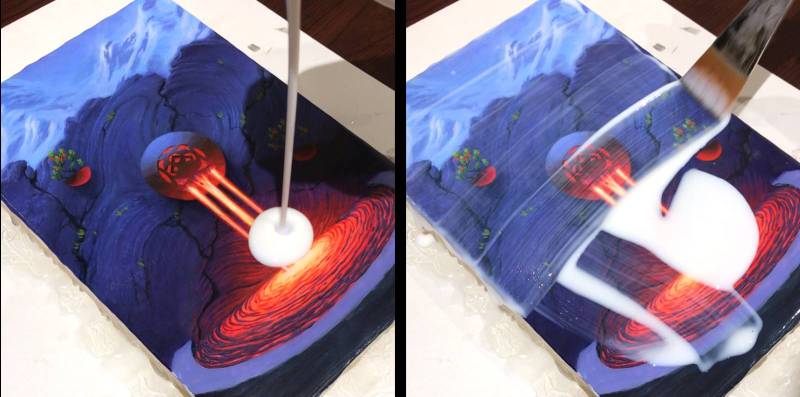
It can’t be seen at this angle, but this 6″ x 9″ painting sits elevated on a small box.
Crazing, where cracks appear from uneven drying, can happen if you apply the medium too thickly and/or if the room is lacking moisture in the air. If crazing happens, you can fix it this time with another layer of medium to fill in the gaps, and next time by applying it more thinly and by controlling your humidity.
If I want to ‘oil out’ or just passively save my work, I brush the medium on thinly, and move on to work in another spot while it dries. I’ve increased the frequency with which I do this in an effort to save time! Since it is thin and not laid flat to dry, this application will not reduce texture and may even slightly exaggerate it, making it an unsuitable choice if preparing for a glaze.
Unintended Consequences
SID – If you’re working with acrylics, especially when you’re creating slower-drying conditions with retarder and other means I described in Part 1, you need to be aware of Substrate Induced Discoloration (SID) and how to prevent it. Water-based media, when wet for long enough, can dissolve impurities in your substrate and cause them to migrate into your paint film before it dries (once it is dry, it is fine). To prevent this, experts recommend you apply multiple layers of gloss medium before applying gesso or paint. You can learn more about it here.
If a few layers of gloss medium underneath has been shown to adequately protect against this, I figure that the additional layers I add throughout and two at the top before varnishing can only vastly improve the stability and safety of the paint film.
Shadows – If you apply too many thick medium layers, the film can build up beyond the thickness of a quarter. This can be used intentionally to drop shadows, and can be desirable, but it can also be frustrating when not intended.
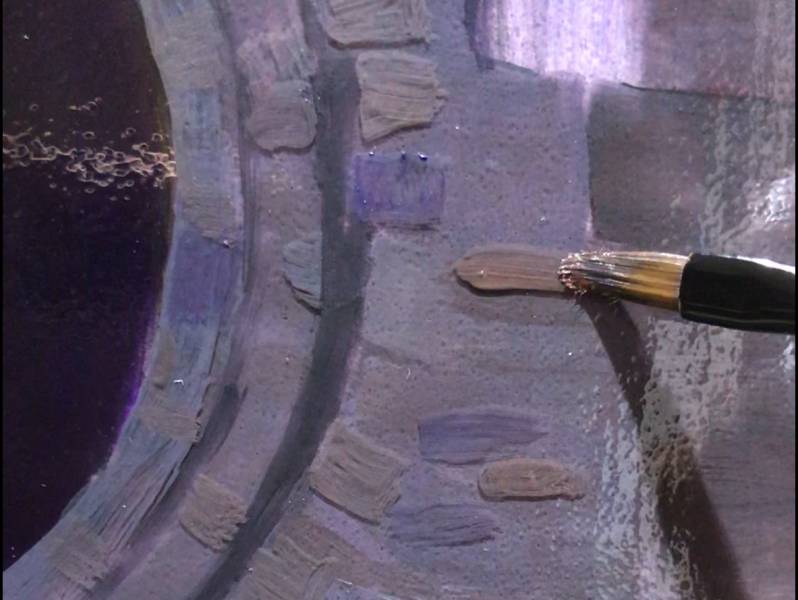
These brick strokes float on a number of clear medium layers.
Outgrowing the frame – The application of medium (and frankly gesso too) that is brushed over the sides of a horizontal surface can cause the final painting to grow a quarter of an inch or more. If you’re like me and you order your frame before your painting is complete, you may find it has outgrown it by the time you’re done. A utility knife can be used to cut away the overgrowth after completion/before framing.

Using medium this way is my most novel advice when it comes to using acrylics, and I hope it helps. What other questions do you have about acrylic paint? What would you like to see me cover in Part 3?


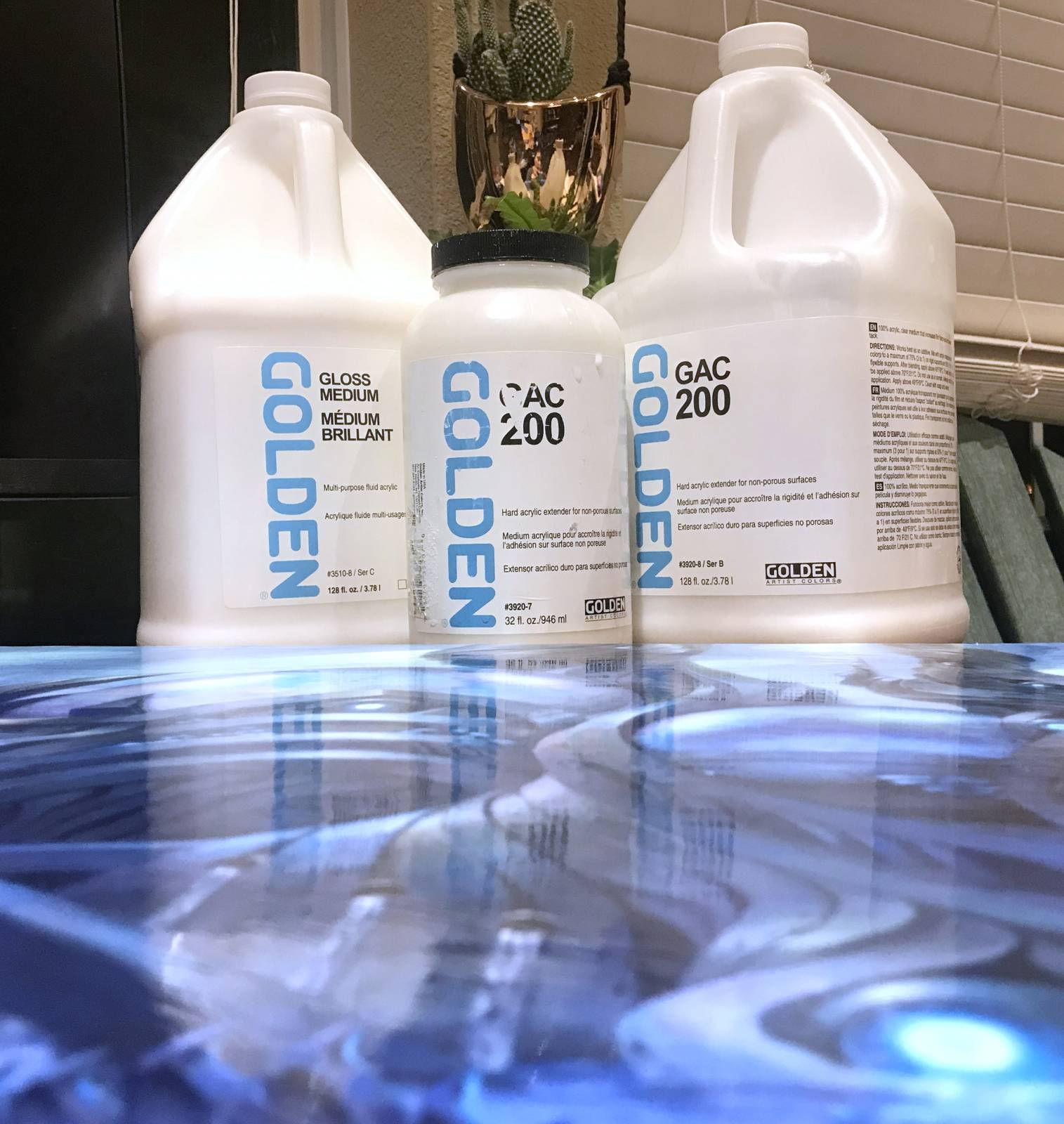
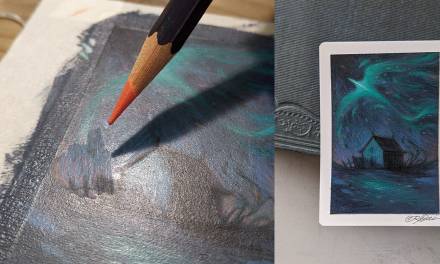

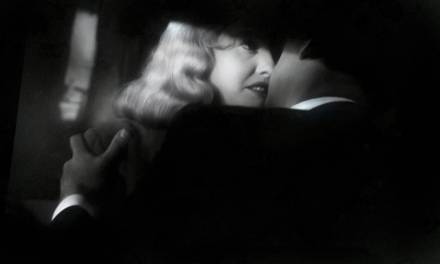

I’ve never seen anyone use medium this way, Sarah. Thank you for sharing this part of your process!
Thanks for reading, Natalie! I don’t know anybody either, but they’ve got to be out there… it really is a game-changer!
Learning to paint, I decided to start with Acrylics and bought a course off of Udemy to learn. The instructor taught to paint exactly like your method. It was like he was turning acrylics into oil paintings while having the benefits of the layering you mentioned.
Going on Youtube and watching other Acrylic painters’ processes, I was so confused on what the ‘proper’ method for painting in Acrylics is. I didn’t realize you could just use water, lol.
Love the info from these articles and I hope a part 3 comes out!
That’s really neat! Which course is it?
Thanks so much for posting these articles! I invested very heavily in Golden Open paints and mediums a few years ago, then life took a turn and it’s all been boxed up since then. I really liked it, but felt like wasn’t making any progress with it. I think you have several of the puzzle pieces here that I was missing. I even have the same pallet, but didn’t use it because I thought the acrylic would stick, stain, and ruin it, so I thought it was only for watercolor.
I’m so glad to hear that Andy!
To be fair, I do think the mijello palette is less ‘peel off’ than it is advertised as. It takes scraping, and since it is plastic, that just leaves grooves for paint to stick to more. When I am in a time crunch (pretty much always now), I use palette paper inside so I can quickly throw it out and move on to the next piece. The merit of them, IMO, is just in their airtight seal and low profile.
This is immensely helpful information for my acrylic paintings. Thank you so much!
Excellent article Sarah! Your magic eraser technique is really interesting. It looks like you paint on a smooth substrate, which would be beneficial for rubbing away paint without an issue. I am wondering if this method would work appropriately on canvas, due to its irregular surface?
Well, if it was mounted canvas on wood or similar, which would remove other factors outside of texture, it would work fine. You’d lose the canvas texture pretty quickly though.
If you’re doing it on stretched canvas , the first concern I’d have would be the need to switch to 100% gloss medium instead of 50/50 GAC200. The latter can become very brittle at cold temperatures, warm enough cold temperatures that I might expect shipped or traveling paintings to be exposed to them and be at risk. I haven’t ever used canvas, but I’d wonder if there was a risk for pooling in the middle too, and if weight could be a problem. Maybe that’s normal for canvas though, to support a lot of weight?
Incredibly useful article, thank you for sharing!
I guess I just wanted to clear, when you erase paint over a matte medium covered layer, are you just using those magic erasers? Do you think it would work on acrylic gouache?
Never matte medium, only gloss. But yes, when I’m erasing paint, it’s using a magic eraser. You can buy melamine foam online that isn’t branded and is the same. You’ll want to avoid any magic eraser brand erasers that say they come with soap or something added to them.
Hi Sarah, I can’t tell you how much these articles have helped me. I want you to write dozens more. I have two questions.
First, is there a determining factor when you choose to use Open Thinner as a medium or do you just always use water?
Second, I noticed in this article that you gesso your wood panels. Is that a normal approach for you or do you sometimes use Matte Medium to create that separation layer? Are there benefits of one approach over the other?
Hi John,
I don’t use either of those, Open Thinner or water, in any situations. I’m using gloss medium…I mix it with another kind of gloss medium, but I wouldn’t recommend anything else.
Check out the link in the article about SID. I do 3+ layers of gloss medium under gesso, and only use gesso to give myself a white background to work on. Gesso provides zero protection, it’s just an absorbent ground that colors the canvas the way I want.
I don’t own matte medium nor open thinner. Matte medium has matting solids that reduce clarity, which I would want to avoid. Open thinner is for making paint more fluid, but I think this method of working is best with thicker paint. I also discourage the use of water for any purpose other than misting your paint and cleaning your brushes…I always squeeze my brushes dry with a paper towel when they come out of the paint water, because extra water messes with consistency. I hope that helps.
I just wanted to be clear. Are you just using a magic eraser to wipe away paint on a matte medium covered layer? Do you think it will work with acrylic gouache? Very fascinating and enlightening article.
Hey Steve, she’s using a magic eraser to wipe away paint that dried on top of a purely gloss medium layer. I bet it would work the same with acrylic gouache. Did you ever try it?
This is so cool! I never knew you could paint with acrylics like this. I’m excited for part three. Are there any videos online demonstrating your painting live?
I’m hoping to do one for Muddy Colors later this year, but it requires I’m able to slow down enough to handle painting and recording at the same time. 2025 is turning out to be a busy year!